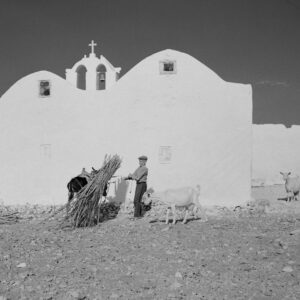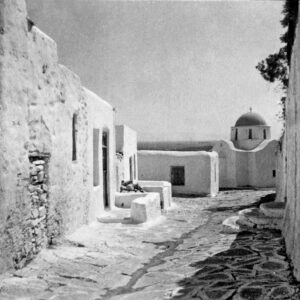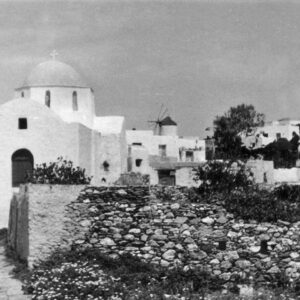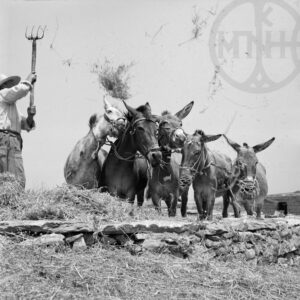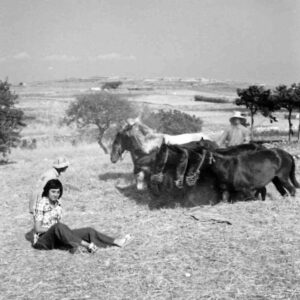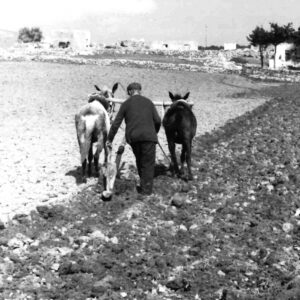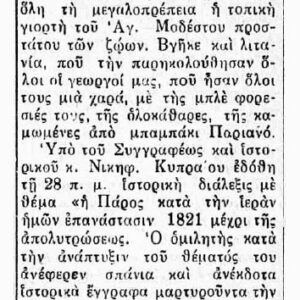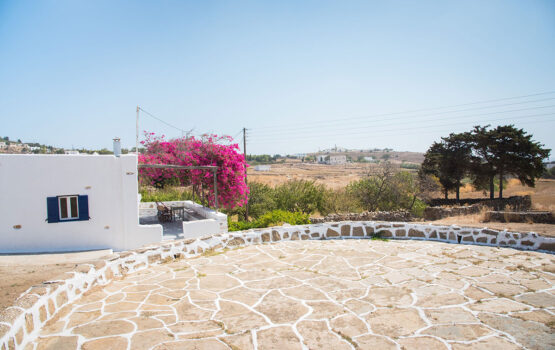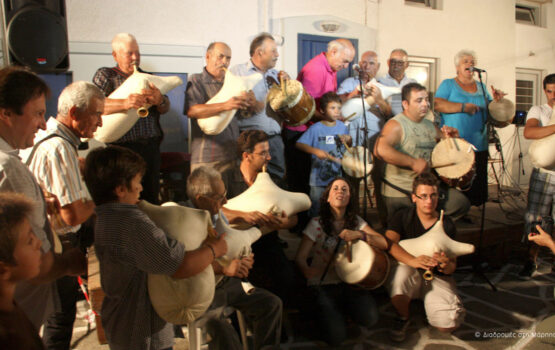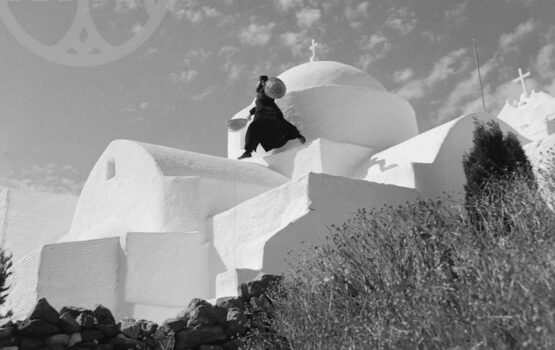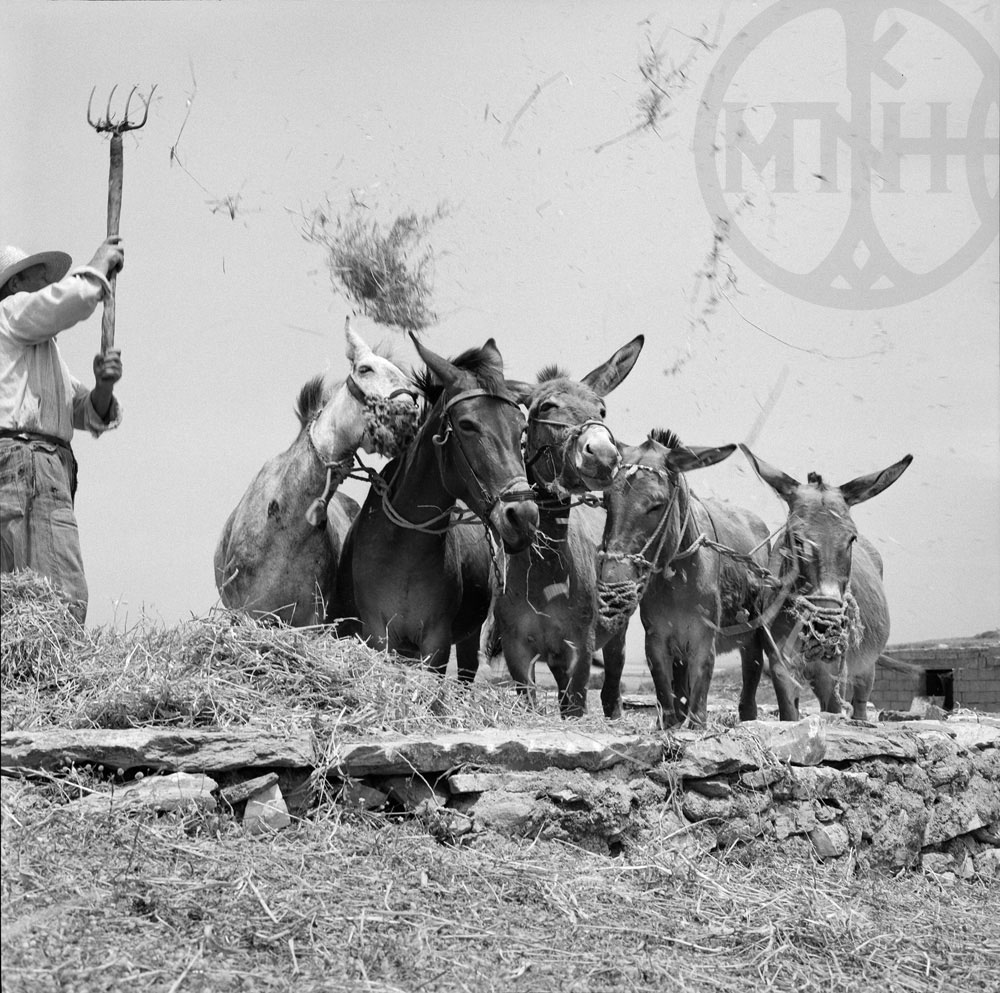
Celebrations and customs dedicated to the fertility of land and animals
The people of Marpissa and Paros worked mainly in farming. The climate and soil morphology favoured agricultural production and the development of many farming-related professions (farriers, saddlemakers, coopers, winemakers, farmers). As a rural community, the people of Paros celebrated the land, its fruit and animals in feasts and religious events.
“On 6 August, when the grapes start becoming sweeter – at least in the plains, because they take much longer on higher altitudes – the feast day of the Transfiguration of Jesus, after the divine liturgy has ended, the priest reads the “blessing for the communion of grapes” and blesses the grapes that villagers have brought to the church is small baskets or wrapped in scarves. From that day onwards, they start eating grapes as most of them have now ripened” (Aliprantis, 1995, p. 108).
The feast of the Cross on 14 September is particularly important for sowing. Farmers would take a bag of wheat along with a pomegranate to the church for the priest to bless. “Let the land germinate and give seed to sow and bread to eat” (“Blessing of the seeds”). They threw half of the wheat from this bag in the fields when they started sowing. At the end of the sowing, they threw in the rest of the bag and smashed the pomegranate, to make sure they would get a good harvest.
“In the old days, they used to take a small bag filled with wheat and a pomegranate to church. On that day, you could see even one hundred people in there, because back then people were deeply devout. They took these to the priest for blessing and then with them back home; as soon as the sowing started, when paired oxen started ploughing and sowing, they opened this bag and put the seeds in there in a larger bag let’s say, so that all seeds thrown to the earth would be blessed as well. Once the yoking was over and the ploughing and sowing had finished, they smashed the pomegranate on the plough. This is what my father did and it is from him that I know and have been taught these things” (Spyros Tsigonias).
The church of Panagia Anapliotissa or Mesosporitissa, in Marpissa, which celebrates on the feast of the Presentation of Virgin Mary on 21 November, is also linked to sowing. This feast is in the middle of the sowing season.
At Christmas, housewives used to made Christmas bread. At exactly midnight, the master of the house would get up, take out the central point of the bread featuring the cross, cut it in four and feed it to the animals that would be yoked. He would throw it in the straw for the animals and then leave, because according to tradition, he should not stay and hear the animals talking to each other, saying “Thank God, we are tasting our toil!” (Flora Anousaki).
The feast of Agios Modestos held a special place in the life of farmers, as he was the protector of animals, especially plough animals. On the day of his feast, 18 December, farmers who had animals took artos bread offerings to the church, the so called “voudopsomo” (ox bread), which was later offered to the animals as reward for their contribution to the production of grain. The feast was a day of rest for the animals and they were not allowed to work.
The church of Agios Modestos was originally built to be the church of the Transfiguration of Jesus. It was renamed to Agios Modestos church in 1931, when the icon of the saint was painted. A group of young people, Konstantinos N. Aliprantis, Fokionas N. Aliprantis, Theodoros I. Kefalas, Frangiskos G. Kefalas, Ioannis M. Tsantoulis, Dimitrios M. Tsantoulis, raised money to make the icon of the saint and after the Occupation they extended the church, with their own personal work and using mules to carry stones from Xehoriani. In this way, farmers got a church of their patron saint, on the feast of whom, according to reports, the local farmers offered up to 90 artos breads!
Sources
Archives of the Association “Routes in Marpissa”.
Aliprantis, N. (1995) “Γεωργοοικονομικά της Πάρου: Μαρτυρίες από το κατάστιχο του έμπορου Ιωάν. Λεβάντη από τον Δραγουλά” (Agricultural Economics of Paros: Testimonies from the records of merchant Ioannis Leventis of Dragoulas) Τα Παριανά, issue 57, April – June, Athens, p. 101-115
Vasiliopoulos, I. and Tripolitsioti, E. (2013) “Σπορά – Θέρος -Αλώνισμα – Μύλος – Άρτος: Μελετώντας τον κύκλο των Δημητριακών” (Sowing – Harvest – Threshing – Milling – Bread: Studying the cycle of grains). Τα Παριανά, issue 131, October – December, Athens, p. 419-427
Holy Metropolis of Paronaxia, Panagia Anapliotissa or Mesosporitissa (Presentation of the Virgin Mary). Available at: www.i-m-paronaxias.gr [10/01/2021]
Special thanks to Nikitas Aliprantis, Flora Anousaki, Sophia Kefala, Spyros Tsigonias for the information and their valuable assistance.

